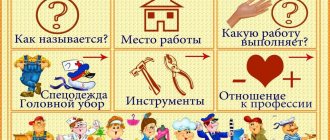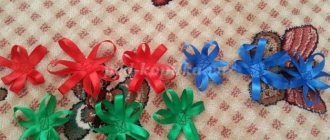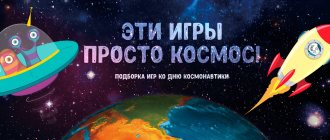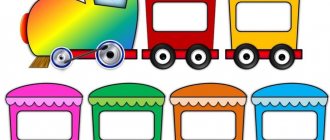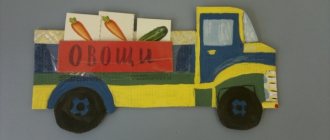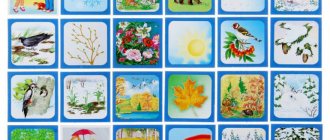Educational didactic game “Magic Circle”
Alena Chumak
Educational didactic game “Magic Circle”
Presentation of the author's educational game
Author's full name: Chumak Alena Sergeevna
Name of preschool educational institution: “D/S “Nastenka”
Game name: " Magic Circle "
Children age group: 2-3 years
Goals: creating a social situation for the development of children in the process of cognitive and play activities “ Magic Circle ”
;
children's sensory abilities (ideas about color, shape, size)
.
1. create conditions for the formation of an idea about the game “ Magic Circle ”
;
2. create conditions for the development of thinking , auditory attention and active speech of children;
3. create conditions for familiarization with wild and domestic animals and their food;
4. create conditions for familiarization with different geometric shapes and colors;
5. create conditions for enriching and accumulating children’s sensory experience during object-based play activities through games with didactic material .
Puzzle game “Magic Circle”
Card index of didactic games for FEMP (senior group)
Didactic game “Count correctly”
Task: to practice counting objects by touch.
Material. Cards with buttons sewn on them in a row from 2 to 10.
Progress of the game:
Children stand in a circle, holding their hands behind their backs. The presenter distributes one card to everyone. At the signal: “Let's go, let's go,” the children pass cards to each other from left to right. At the signal “Stop!” — they stop handing over cards. Then the presenter calls the numbers “5”, “6”, “7”, etc., and the children, holding a card with the same number of buttons, show it.
Rules of the game. You can only count buttons behind your back. If a child makes a mistake, he leaves the game and another child takes his place. Game continues.
Didactic game “Wonderful bag”.
Objective: to help consolidate the names of geometric shapes and the ability to identify them by touch.
Materials. Bag, geometric shapes of different colors and sizes (circle, oval, triangle, square, rectangle, rhombus, trapezoid, quadrangles)
Progress of the game:
The teacher has a bag with geometric shapes. Children find a geometric figure by touch, take it out and tell everything about this figure. For example: "This is a square. It has four corners, four sides, it is blue, etc.”
Didactic game “Match an object to a geometric figure”
Task: to develop the ability to compare a geometric figure with the shape of an object.
Material: geometric shapes, a selection of objects of different shapes.
Progress of the game:
The children stand in a semicircle. In the center there are two tables: on one there are geometric shapes, on the second there are objects. The teacher rolls the ball in a circle. The child to whom the ball rolled comes out, the teacher names a geometric figure, the child finds it and an object of the same shape. The found object rises high: if it is chosen correctly, the children clap their hands. The game continues until all the objects are suitable and matched to the samples.
Didactic game “Construction according to the scheme”
Objective: to develop logical thinking in children of senior preschool age.
Material: cards with contour diagrams, builder's details. Progress of the game.
Children are given a card with contour diagrams and asked to lay out these images from the parts of the construction set on the table, using this card as a sample. To make things more challenging for children, offer a few more parts than they need.
Didactic game “Assemble a geometric figure from parts”
Task: practice making a geometric figure from parts. Material: wooden platform with frames of different shapes, parts - liners. Progress of the game.
Children are given a card with contour diagrams and asked to lay out these images from large parts of a building set on the table, using this card as a sample. To make things more challenging for children, offer a few more parts than they need.
Didactic game "Tangram"
Objective: to develop the ability to compose architectural structures from geometric shapes.
Material: 8x8 cm square of cardboard, equally colored on both sides, cut into 7 parts, sample cards.
Progress of the game:
One tangram (7 parts) is distributed for each child. All 7 parts are used. By tightly attaching parts to each other, children create various architectural structures based on samples and according to their own ideas.
Didactic game “Columbus Egg”
Objective: to develop the ability to analyze complex forms and recreate them from parts based on perception and formed ideas.
Materials: oval, cut into 10 parts, sample cards.
Progress of the game:
One Columbus egg (10 parts) is distributed for each child. All 10 parts are used. By tightly attaching the parts to each other, children create various images of a fantastic animal based on samples and according to their own ideas.
Mathematical puzzle "Pythagoras"
Objective: to develop the ability to compose various images, silhouettes of animals, objects, and buildings from geometric shapes.
Material: square, equally colored on both sides, cut into 7 parts: 2 squares of different sizes, 1 quadrangle (parallelogram), 2 small triangles and 2 large triangles, sample cards.
Progress of the game:
One tangram (7 parts) is distributed for each child. All 7 parts are used. By tightly attaching the parts to each other, children make up various images, silhouettes of animals, objects, buildings based on samples and according to their own ideas.
Puzzle game “Magic Circle”
Objectives: to develop the ability to analyze, isolate the forms of a composed object into parts, look for ways to connect one part to another; develop children's logical thinking, combinatorial abilities, practical and mental actions.
Material: circle of 10 parts: 4 equal triangles, the remaining parts are equal in pairs, similar to triangular shapes, but one of their sides is rounded.
Progress of the game:
One circle (10 parts) is distributed for each child. All 10 parts are used. By tightly attaching the parts to each other, children create various images of men, birds, rockets and other figures.
Children's master class on manual labor “Didactic game “Magic Circle. Guess the fairy tale""
Morozova Marina Yurievna
Children's master class on manual labor “Didactic game “Magic Circle. Guess the fairy tale""
Materials for the master class : colored cardboard, a set of colored paper, scissors, glue stick, printouts depicting fairy-tale characters .
The master class was performed by the guys from the whole group in pairs.
At the preparatory stage of the master class, the guys cut out fairy-tale characters .
Nastya and Rodion carefully cut out the characters from the fairy tale .
Makar and Yegor carefully completed part of their work.
Martin and Zakhar took their task responsibly.
At the next stage, master class Makar and Rodion very carefully cut out two parts along the contour - round .
Rodion cut out a circle , divided into equal sectors. This is the base of " Magic Circle "
.
Makar carved a colorful rotating circle that overlaps the circle with sectors .
Didactic educational game "Magic Circle"
Tatyana Alekberova
Didactic educational game "Magic Circle"
«Magic circle»
Didactic educational game for children of middle and senior preschool age
Goal: to consolidate children’s knowledge about the culture and traditions of the Buryat people.
Tasks:
• Introduce the concept of “time”
, learn to determine
“what time is it?”
by the hour.
• To consolidate children’s knowledge about seasonal changes in nature (signs of winter, spring, summer, autumn, names of months.
• Teach children to classify animals, birds, fish, and plants of our region.
• Give the concept of “nomad animals”
,
• Teach children to play “shagai naadan”
, dice game,
• Strengthen children’s knowledge about the animals of the eastern horoscope,
• Strengthen the ability to navigate on a plane, in space.
• Cultivate interest in studying nature, history, one’s small homeland, traditions and culture of the Buryat people.
The game solves the problems of the following educational areas, in accordance with the Federal State Educational Standard for Education:
Cognitive development . Encouraging actions aimed at understanding the world around us, developing cognitive motivation, and developing ideas about color, quantity, number, space and time.
Socio-communicative development . Creating conditions for preschool children to master the norms, values, and culture accepted in society. Development of social and emotional intelligence of children, promote the development of friendly communication and interaction with adults and peers. Fostering love for our small Motherland, a tolerant attitude towards people of different nationalities. Contribute to the inculcation of moral and patriotic feelings.
Game options on " Magic Circle "
1. Game "Clock"
.
The numbers from 1 to 12 are located
in a circle there are two hands, minute and hour. Children get acquainted with the concept of the minute hand, hour hand, the location of numbers on the playing field, and determine the time.
Progress of the game. Children are offered a ready-made dial; the position of the hands is asked to change depending on the teacher’s instructions. At the beginning of the game, children place arrows according to the pattern, then lay them out on their own.
2. Game "Seasons"
.
on the circle : white – winter, blue – spring, green – summer, yellow – autumn.
Children are offered pictures depicting seasonal phenomena; they must correctly arrange them in accordance with the season and tell why they did so.
3. Game "Months"
.
on the circle : white – winter, blue – spring, green – summer, yellow – autumn. To these segments, 2 small segments of different colors are added for each segment. The result will be 12 segments that correspond to
12 months.
Task A. for older children: name everything in order
months of the year, separately name the months of winter, spring, summer, autumn.
Task B. for older children: independently arrange all the months from memory, by color. Strengthening sensory skills and motor memory.
4. Game “Fudge Animals”
.
The circle is divided into 5 parts by fences (pendocks, children are offered toys - animals, task: choose from the available animals - namadnye and arrange them in the “pen”
.
(Namad animals: camel, cow, goat, horse, ram)
.
For older children: tell what benefits these animals bring to humans.
For children in the middle group, additional supporting pictures with images are offered (meat, wool, fur coats, clothes, toys, yurt, shoes, medicine, milk)
.
5. Game “Birds - fish, plants - animals”
.
on the circle : white – sky, blue – water, green – forest, yellow – earth.
Task for children of the middle group: from the proposed pictures of animals, plants, fish and birds, sort them into habitats.
Assignment for older preschoolers: from the proposed pictures of animals, plants, fish and birds, choose, respectively, animals, plants, fish, birds of our region and arrange them according to their habitats.
6. Game “Young Orienteer”
.
The circle lies on the table , on the circle there are symbols: north, west, south, east.
Task for children of the middle group: find objects, furniture, that is, what is in the group in the north side, in the south, respectively,
in the western and eastern.
Task for children of the older group: determine the directions of the wind rose on the plane, in the group, then on the kindergarten site. Draw up a plan for the group or site.
7. Game “Step naadan”
.
First of all, it is important to remember what each side of the “shagai”
Khonin (sheep)
Yamaan
(goat)
Tameen
(camel)
Morin
(horse)
Kher
(cow)
The game is that all the bones are poured into a circle , each player chooses an animal and collects the bones in accordance with the chosen animal. The one who collects the most animals wins
8. Game "Oriental calendar"
.
Task A: Middle-aged children are offered pictures of animals of the eastern calendar; they must be arranged in order based on the sample. Preliminary work: reading the legend about the animals of the eastern calendar.
Task B: For older children, arrange the animals in order without a pattern, from memory.
9. Game “Arrange the furniture in the yurt”
.
Children are offered attributes of Buryat yurt decoration and furniture; they need to put everything in its place. Children should know that the right side of the yurt is the male side, and the left is the female side, and in the middle is the fireplace.
Middle-aged children arrange furniture and decorations according to a pattern.
For older children, furniture and decorations are arranged from memory. Next, it is proposed to independently make a sketch of the interior decoration of the yurt, depicting the top view of the yurt.
10. Games initiated by children.
Assignment: children come up with their own creative game based on “ Magic Circle ”
.
Bibliography:
1. Sample educational program “From birth to school”
edited by N. E. Veraksy, T. S. Komarova, M. A. Vasilyeva.
2. Lesson notes for the senior group “Cognitive development ”
V. N. Volchkova, N. V. Stepanova. Voronezh 2008
3."Russia is my homeland"
K. Yu. Belaya, M. A. Zlobina

